Apple Intelligence Late 2025 Update introduces smarter Siri, improved productivity tools, health tracking integration, and enhanced privacy features. Explore key milestones, new iOS 19 and macOS Sequoia capabilities, and what’s ahead in 2026.
What Is CRM? A Complete Guide to Customer Relationship Management
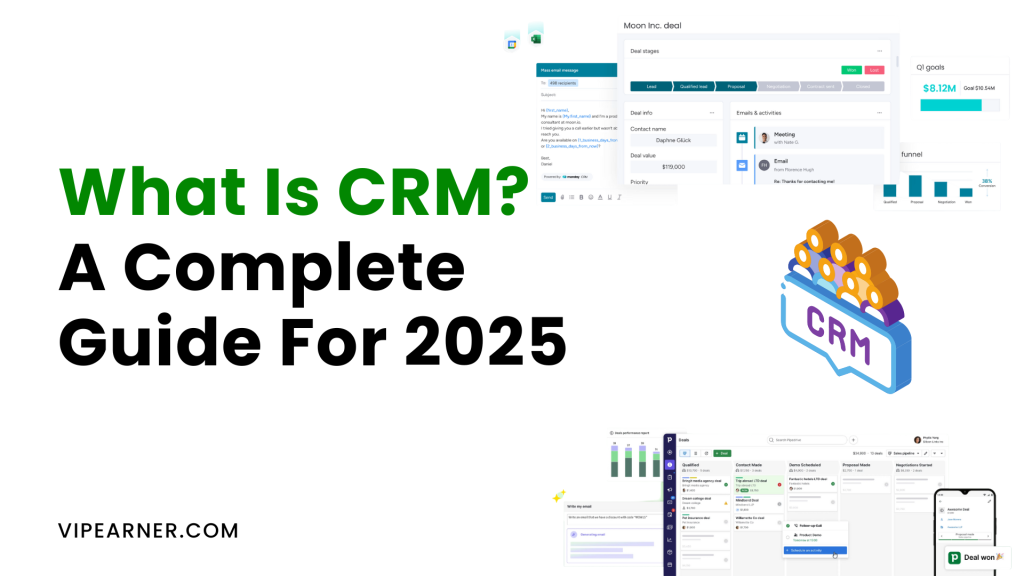
Customer Relationship Management (CRM) is not just a business buzzword—it's the cornerstone of modern business success. At its core, CRM is a strategic approach that leverages technology (such as automation tools), processes (like streamlined customer onboarding), and people (trained sales and support teams) to effectively manage customer relationships, enhance customer loyalty, and drive sustained business growth.
In today's digitally-driven economy, understanding and implementing effective CRM strategies can differentiate successful businesses from those experiencing challenges. This comprehensive guide will delve deeply into CRM, unraveling its complexities and exploring its transformative potential in the contemporary marketplace.
The Conceptual Framework of CRM

CRM is best understood when viewed through three essential lenses: strategy, philosophy, and technology.
As a strategy, CRM places customer relationships at the forefront, guiding businesses toward customer-centric decision-making and long-term profitability.
Philosophically, CRM fosters a culture focused on understanding, serving, and retaining customers through personalized interactions and ongoing engagement.
Technologically, CRM encompasses software and tools designed to streamline operations, optimize customer interactions, and harness data to inform strategic decisions.
Together, these components build a cohesive framework for nurturing robust customer relationships, ultimately leading to sustained business success.
Types of CRM Systems
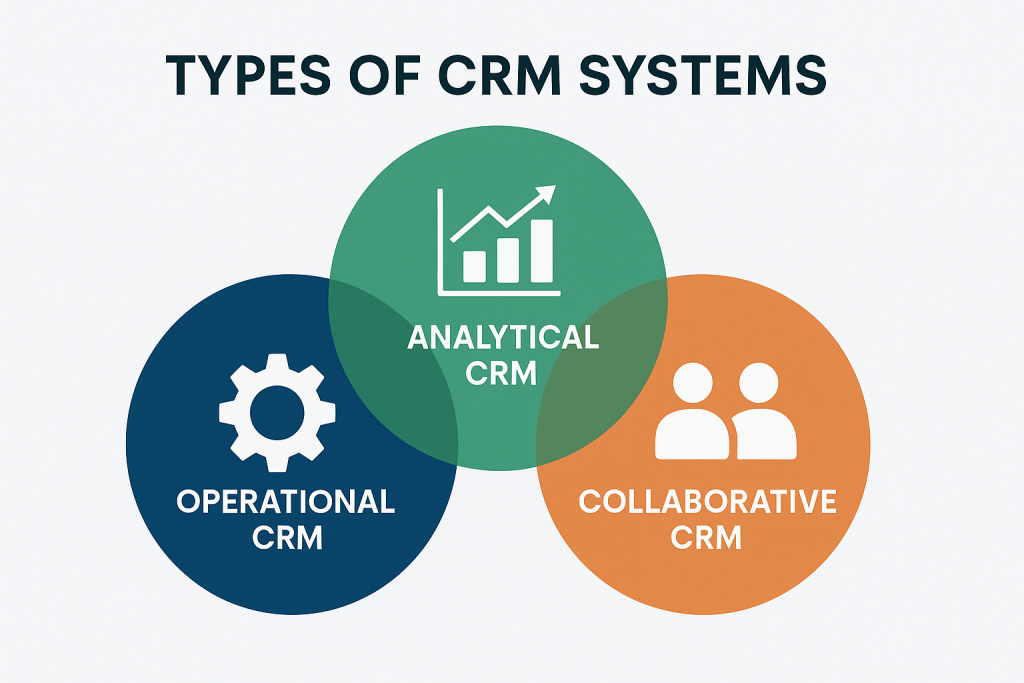
Understanding that CRM is not a one-size-fits-all solution is critical. Different organizations require different CRM systems depending on their structure, objectives, and customer engagement models. CRM software is commonly categorized into four major types, each designed to meet specific business needs:
1. Operational CRM
Operational CRMs focus on automating and improving day-to-day business operations. These include marketing automation, sales force automation, and customer service support. By streamlining workflows and reducing manual tasks, operational CRMs ensure consistent and efficient interactions with customers.
Key features include:
- Contact and lead management
- Email and campaign tracking
- Customer support ticketing systems
- Workflow automation
Use case example: A retail company automates follow-up emails after a purchase and assigns service requests to support agents based on ticket priority.
2. Analytical CRM
Analytical CRMs are designed to collect, process, and analyze customer data to inform strategic decision-making. They help identify patterns in customer behavior, measure campaign effectiveness, and support segmentation and targeting.
Key features include:
- Customer lifetime value analysis
- Data mining and predictive analytics
- Dashboards and performance reports
- Customer segmentation
Use case example: A financial institution uses predictive analytics to identify customers likely to churn and proactively targets them with retention offers.
3. Collaborative CRM
Collaborative CRMs facilitate information sharing across various departments such as sales, marketing, and customer support. These systems help ensure every team has access to a unified customer profile, enabling seamless and coordinated service.
Key features include:
- Shared customer databases
- Integrated communication tools (chat, email, social)
- Interdepartmental visibility
- Partner and vendor relationship tracking
Use case example: A B2B software company uses a collaborative CRM so both the sales and implementation teams have real-time access to all client interactions.
4. Strategic CRM
Strategic CRM takes a long-term view of customer relationships by aligning business development efforts with customer value and loyalty. It focuses on retention, brand affinity, and maximizing lifetime value through proactive engagement.
Key features include:
- Loyalty program management
- Customer journey mapping
- Account-based marketing tools
- Relationship scoring models
Use case example: A subscription service provider uses strategic CRM tools to track long-term engagement trends and refine their loyalty offerings accordingly.
Key Features and Functions of Modern CRM Systems
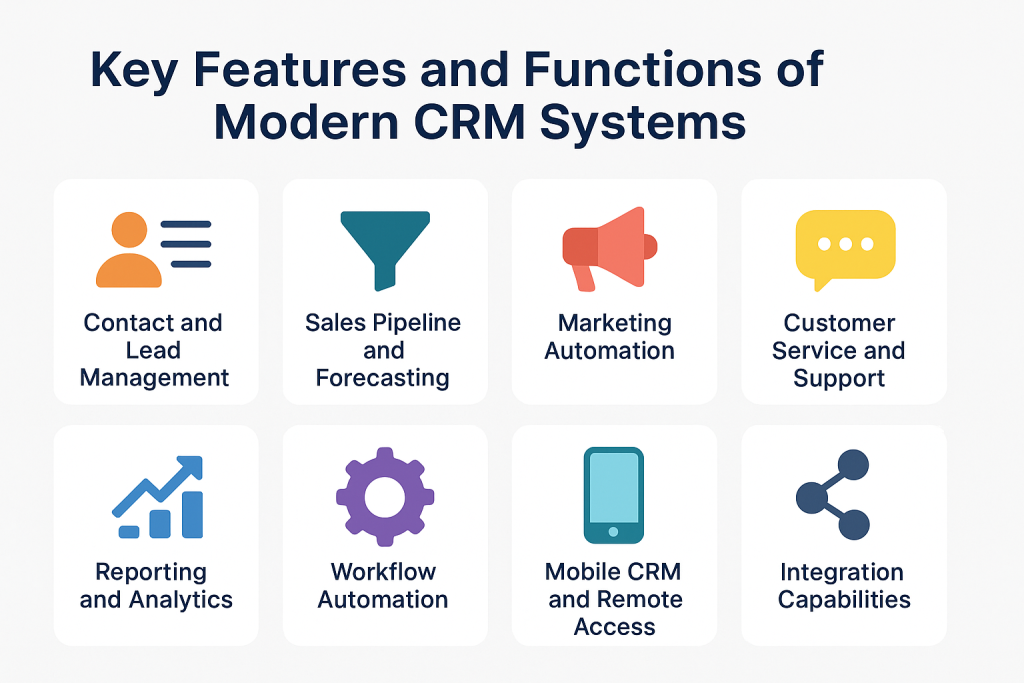
Modern CRM platforms go beyond simple contact storage - they are robust ecosystems that power entire customer-facing operations. Today’s CRMs integrate sales, marketing, support, and analytics into a unified system. Below are the most essential functions you can expect from a contemporary CRM solution:
1. Contact and Lead Management
Capture and organize contact information, log communications, and monitor lead activity across channels. A centralized database makes it easier to segment, target, and personalize outreach.
2. Sales Pipeline Management
Track opportunities as they move through stages of the sales funnel. Visual pipeline dashboards help sales reps prioritize high-value prospects, forecast revenue, and improve close rates.
3. Marketing Automation
Design, launch, and monitor campaigns across email, SMS, and social media. Automate follow-ups, nurture sequences, and behavior-based workflows for efficiency and scalability.
4. Customer Service Tools
Enable support teams to manage tickets, deliver consistent service, and reduce resolution times. Includes live chat, knowledge bases, and SLA tracking.
5. Reporting and Analytics
Customizable dashboards and performance reports give managers visibility into sales activity, marketing performance, customer satisfaction, and team productivity.
6. Mobile CRM and Remote Access
Access CRM data on the go through mobile apps, ensuring sales and support teams can work effectively from anywhere.
7. Integration Capabilities
Modern CRMs connect with tools like email platforms, eCommerce systems, ERPs, and third-party apps via APIs or native integrations, creating a seamless tech ecosystem.
8. AI and Predictive Intelligence
Advanced CRMs now offer AI-driven suggestions, automated data entry, customer intent prediction, and conversational tools like chatbots to augment human capabilities.
Benefits of Using a CRM System
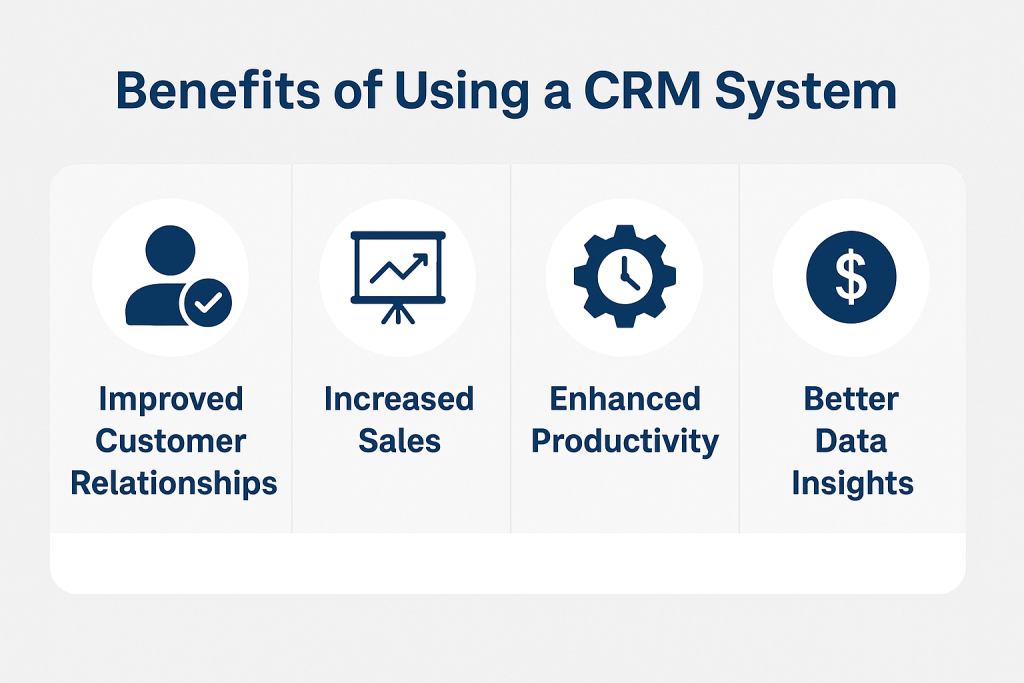
A well-implemented CRM system delivers transformative benefits that reach across departments and customer touchpoints. While features and use cases may vary by business type, the core advantages remain universal:
1. Improved Customer Satisfaction and Retention
By having a 360-degree view of every customer, teams can deliver faster, more personalized service. CRM helps anticipate customer needs and proactively address pain points.
2. Increased Sales and Revenue
CRMs enable teams to manage more leads, close more deals, and track the entire customer lifecycle. Automated follow-ups and nurturing sequences help prevent lost opportunities.
3. Enhanced Collaboration Between Teams
Marketing, sales, and support departments work from the same data source, reducing silos and improving collaboration. This leads to more consistent messaging and service.
4. Better Decision-Making with Real-Time Data
Analytics dashboards offer up-to-the-minute insights, helping leaders adjust strategies quickly and effectively. This data-driven approach ensures smarter, more confident decisions.
5. Scalable and Streamlined Processes
As businesses grow, CRM systems provide structure and automation that allow teams to manage increasing workloads without losing efficiency.
6. Competitive Advantage
Companies that use CRM systems effectively are often better positioned to understand customer behavior, adapt to market changes, and deliver exceptional experiences.
Additionally, Salesforce offers a helpful overview of CRM benefits from a platform perspective, including real-world case studies and industry examples.
Challenges and Misconceptions
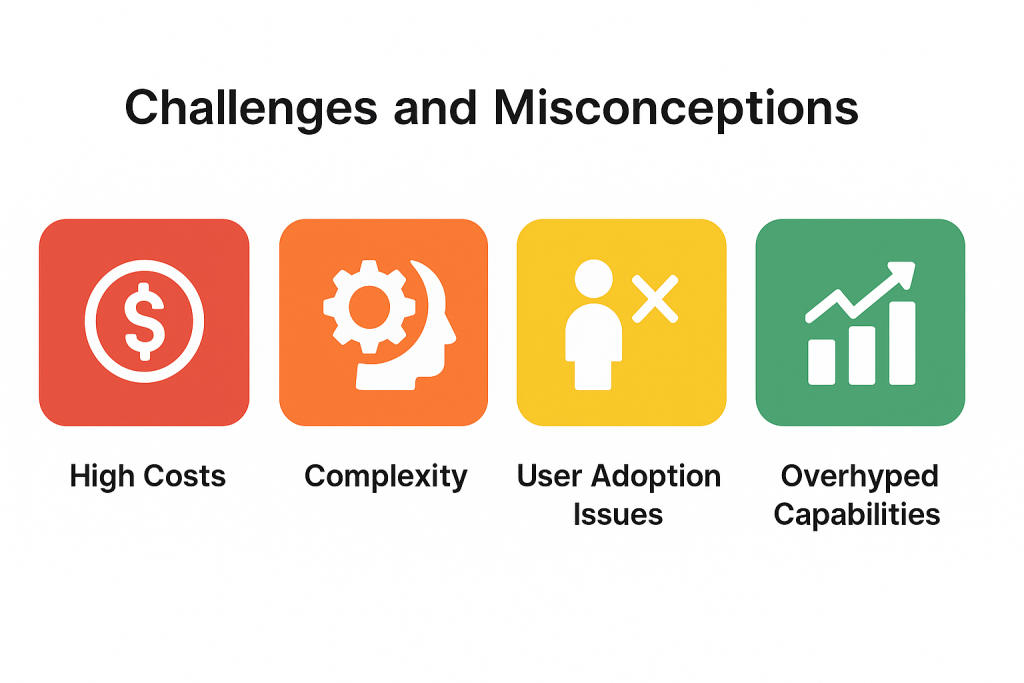
Despite its many advantages, CRM implementation is not without obstacles. Misconceptions and practical challenges can derail even the most promising CRM initiatives if not addressed head-on.
Common Misconceptions
| Misconception | Reality |
|---|---|
| CRM is just software | CRM is a strategic framework supported by technology |
| Only large enterprises need CRM | Small and mid-sized businesses can benefit significantly from CRM adoption |
| CRM guarantees immediate ROI | Results often depend on proper planning, execution, and adoption |
| CRM is only for sales teams | Modern CRM solutions support marketing, service, and leadership functions |
Implementation Challenges
- User adoption issues: Employees may resist new tools, especially if not properly trained or involved in the decision-making process.
- Data quality concerns: Inaccurate, incomplete, or outdated data can undermine the effectiveness of a CRM system.
- Integration complexity: Connecting CRM with existing systems can be technically challenging without the right expertise.
- Cost management: Upfront licensing, setup, and training costs can be a barrier for some organizations, especially SMEs.
- Over-customization: Excessive tailoring can make upgrades difficult and increase long-term maintenance burdens.
Recognizing and preparing for these challenges from the outset allows businesses to proactively mitigate risks and create a more resilient CRM strategy.
Graph: Top Reasons CRM Implementations Fail
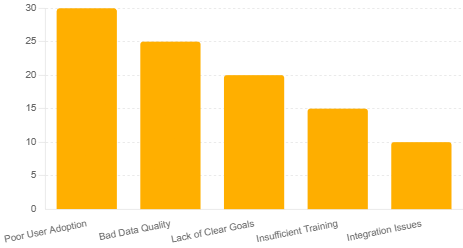
The graph above highlights the most common factors contributing to failed CRM implementations. As shown, user adoption and data quality are among the most critical elements to address during planning and rollout phases.
Industry-Specific CRM Applications
CRM platforms adapt uniquely across industries, evolving to meet sector-specific workflows, compliance needs, and customer behaviors. Here's how CRM is deployed in key verticals:
Retail & E-Commerce
- Personalization at scale (product recommendations, dynamic pricing)
- Omnichannel customer tracking (online, in-store, mobile)
- Inventory and fulfillment integration
Healthcare
- Patient engagement and appointment follow-ups
- HIPAA-compliant data handling
- Communication across care teams
Real Estate
- Lead tracking across long buying cycles
- Property matching and showing management
- Automated client communications and reminders
Financial Services
- KYC (Know Your Customer) integration and risk profiling
- Secure client data storage and communication logs
- Investment and service personalization
Education
- Student relationship tracking (from inquiry to alumni)
- Admissions and enrollment workflows
- Integration with learning management systems
B2B Enterprises
- Account-based marketing tools
- Pipeline visibility across multi-stakeholder deals
- Post-sale relationship tracking and success management
CRM systems are tailored with features and compliance measures that suit the regulatory and operational needs of each field, ensuring both efficiency and customer satisfaction across contexts.
CRM Software Market Overview

As the demand for digital customer engagement has exploded, so has the CRM software landscape. The market now includes a wide range of solutions - from enterprise powerhouses to nimble, small-business-focused platforms - catering to organizations of all sizes and industries.
Market Leaders and Categories
The CRM landscape is often divided into categories by business size and functionality:
| CRM Type | Best For | Notable Vendors |
|---|---|---|
| Enterprise CRM | Large organizations | Salesforce, Microsoft Dynamics 365 |
| SMB CRM | Small-to-mid-sized businesses | Zoho CRM, Freshsales, HubSpot CRM |
| Vertical CRM | Industry-specific use | Veeva (Pharma), Clio (Legal), Jobber (Home Services) |
| Open Source CRM | Fully customizable solutions | SuiteCRM, Odoo, EspoCRM |
Deployment Models
- Cloud-Based CRM: Delivered over the internet with minimal IT overhead; offers mobility and real-time updates. Popular choice for most businesses today.
- On-Premise CRM: Installed on company servers; preferred by organizations with strict data security requirements.
- Hybrid CRM: Combines cloud accessibility with localized data control, suitable for companies navigating regulatory complexities.
Pricing Structures
CRM pricing typically follows one of three models:
- Per-User Subscription: Monthly/annual billing based on the number of users (e.g., Salesforce).
- Tiered Plans: Feature sets vary by pricing tiers (e.g., HubSpot’s Free, Starter, Professional plans).
- Custom Enterprise Licensing: Tailored plans for large-scale deployment with negotiated pricing.
Trends Shaping the CRM Market
- Consolidation of tools into CRM “ecosystems” with marketing, sales, and support modules.
- Rise of AI-powered features (e.g., conversation intelligence, lead scoring).
- Increased demand for privacy-first platforms that support data compliance regulations like GDPR and CCPA.
CRM Implementation and Best Practices
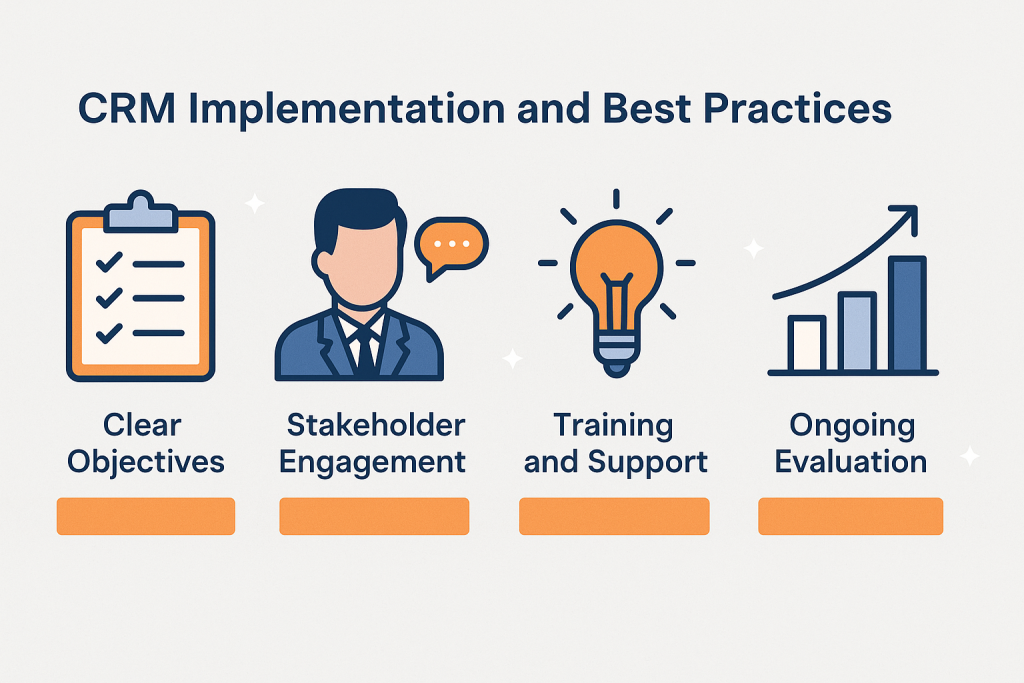
Implementing a CRM system is not a one-time event but a transformative process that can significantly reshape how a business operates. Success often depends more on preparation, alignment, and execution than on the choice of software itself. At its core, CRM implementation requires internal clarity about business goals and an honest evaluation of operational workflows. Without clearly defined objectives, a CRM can become an expensive contact database rather than a powerful tool for customer engagement.
One of the most overlooked elements of implementation is change management. It’s essential to recognize that CRM adoption demands more than software installation—it involves shifting mindsets and routines across departments.
Teams that previously worked in silos must learn to collaborate around shared customer data. This requires leadership support, strong internal communication, and incentives for users to embrace new habits. Early adopters within the organization can be trained to become CRM champions, helping to bridge gaps and drive momentum.
Another critical aspect of a successful rollout is data. Poor data quality at launch can lead to user frustration, diminished trust, and low adoption rates. Data should be reviewed, cleaned, standardized, and deduplicated before migrating it to a new system. In some cases, businesses discover during this stage that they don’t have as much usable customer data as they thought, which can present both a challenge and an opportunity for better long-term data governance.
Finally, organizations need to treat CRM as a living system. After launch, it’s important to monitor usage patterns, gather feedback from users, and adjust configurations accordingly. New features or integrations can be phased in over time, but only if the foundational processes are working well. Periodic training refreshers, usability testing, and KPI reviews help ensure that the CRM continues to align with business needs and supports growth rather than becoming a static tool.
The Future of CRM: Expert Q&A
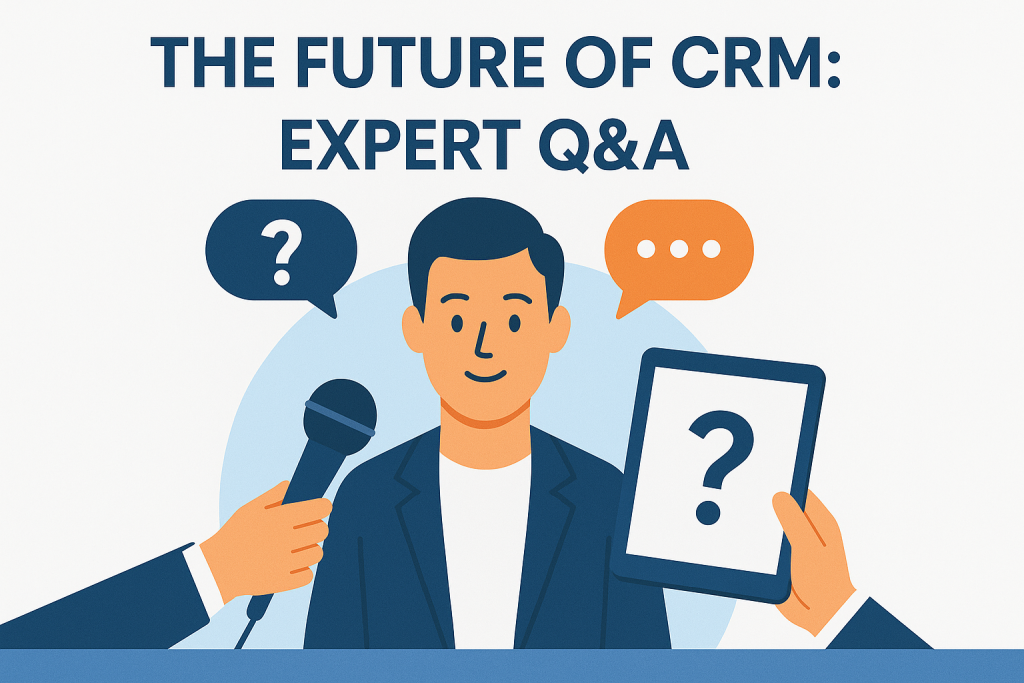
Q: How is AI changing the landscape of CRM?
A: Artificial intelligence is pushing CRM systems beyond data storage and task automation. Today’s platforms can analyze customer behavior, predict future actions, and even suggest the best time to follow up on leads. AI chatbots are also taking on frontline support roles, reducing response times and improving scalability. The shift isn’t about replacing humans—it’s about amplifying what customer-facing teams can do.
Q: What role will omnichannel experiences play in the future?
A: Omnichannel CRM is becoming the standard rather than the exception. Businesses that connect customer interactions across web, mobile, chat, and social channels are seeing stronger loyalty and retention. In the future, we’ll likely see even more seamless transitions between channels, where a conversation started via chatbot can be picked up by a human agent or moved into a personalized email thread with full context intact.
Q: Are there any emerging technologies businesses should keep an eye on?
A: Beyond AI, technologies like voice assistants, augmented reality, and blockchain are being explored for CRM use. For example, blockchain could create transparent, secure customer data trails, while AR might reshape how customer support is delivered in industries like automotive or manufacturing.
Q: What about ethical concerns in CRM’s future?
A: As CRMs get smarter, there’s a growing responsibility to use customer data ethically. Transparency, consent, and data minimization will become defining features of trusted CRM platforms. Businesses that bake privacy into their CRM practices from the start will build stronger, longer-lasting customer relationships.
Q: Final thoughts—what defines the future-ready CRM?
A: Flexibility, intelligence, and trust. The CRM of the future won’t just be a system of record - it will be a system of engagement and insight. It must evolve with the customer, adapt to new channels, and earn loyalty through relevance and respect.
Conclusion: The Strategic Power of CRM

Customer Relationship Management has evolved far beyond its origins as a digital address book. Today, it represents the nexus of technology, strategy, and human connection - an operating system for how modern businesses interact with their customers. From nurturing early-stage leads to delivering personalized support and cultivating long-term loyalty, CRM systems are central to delivering consistent and exceptional customer experiences.
As we've explored throughout this guide, the value of CRM lies not only in its features but in how it's implemented, adopted, and continuously refined. Businesses that approach CRM as a long-term strategic investment - rather than a short-term software purchase - are best positioned to realize its full potential. This requires alignment between teams, clean and actionable data, ongoing training, and a willingness to evolve with changing customer expectations.
Whether you're a startup evaluating your first CRM or a global enterprise refining your tech stack, the principles remain the same: understand your customers deeply, align your tools with your goals, and commit to building relationships that last. CRM is not just about managing relationships -it’s about elevating them.
Let me know if you'd like a summary, a table of contents, or prep the whole document for publishing!

